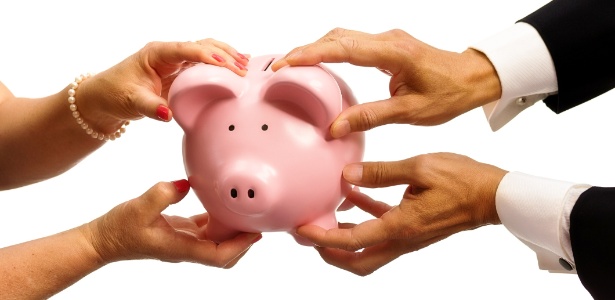When asked, many men tend to claim that the women around them—whether their wives, friends, or family members—have a tendency to spend more. However, have you ever stopped to reflect on the reality behind this perception and the stigmas surrounding it?
The Truth Behind Women’s Spending
When examined more closely, the issue is not as simple as it seems. Yes, on the surface, it may appear that women spend more. But when we consider the broader picture, a different narrative begins to emerge.

Their Income
First and foremost, it’s crucial to acknowledge that gender inequality remains a reality in our society. According to data, women’s earnings average 78% of men’s income, amounting to a gap of over 20%. This undeniable fact significantly impacts their overall economic capacity.
Their Expenses
The “pink tax” is a phenomenon that has garnered significant attention in recent years. It refers to the price disparity between products marketed to women and their equivalent or similar counterparts marketed to men. This price increase in women’s products is often attributed to factors such as targeted marketing, packaging designed specifically for women, and even gender stereotypes.
Personal care items like razors, soaps, and deodorants often cost more when marketed to women, despite containing the same ingredients or offering similar functionalities as men’s products. This price gap also extends to clothing and accessories, where women’s garments frequently cost more than their male counterparts, even when there’s no discernible difference in quality or materials used.
The pink tax has been a subject of debate and criticism, as it represents a form of gender discrimination that negatively affects women’s purchasing power. Additionally, it reinforces gender stereotypes by assigning different values to identical or similar products based on their target audience.
In light of this, many women’s rights advocates have called for greater transparency in product pricing and have urged companies to review their pricing policies to eliminate this unjust disparity. Raising awareness about the pink tax is essential, encouraging concrete actions to ensure price equality and fair treatment for all, regardless of gender.
The Myth of Consumption
It’s also crucial to address a common misconception that transcends gender: the notion that consumerism is an exclusively female trait. This idea, besides being an unfair generalization, overlooks the complexities of human behavior regarding consumption. Consumerism is an issue that can affect anyone, regardless of gender.
Consumerism is a behavioral pattern characterized by the desire and practice of acquiring goods and services in excess, often beyond basic needs. It is intrinsically linked to the consumer culture prevalent in many modern societies, where personal value is often associated with material possessions and ostentatious consumption.
This tendency is driven by various factors, including social influences, advertising, economic pressures, and even psychological issues such as the pursuit of status, happiness, or self-esteem through product acquisition.
While consumption itself is not inherently negative, consumerism becomes problematic when it leads to harmful consequences, both individually and collectively. On an individual level, excessive consumerism can result in debt, financial stress, personal dissatisfaction, and a loss of connection with deeper, more meaningful values. Collectively, rampant consumerism can contribute to environmental issues, such as the depletion of natural resources, overproduction of waste, and environmental degradation.
Thus, criticism of consumerism often focuses on the need to rethink consumption habits, prioritizing sustainability, voluntary simplicity, and personal and social well-being over the relentless pursuit of material goods. This involves a paradigm shift toward a more conscious and balanced lifestyle, where value is not determined by the quantity of possessions but by the quality of life enjoyed and the positive impact on the world.
Their Struggles
Among women who often face heightened economic challenges are single mothers. Their reality is a testament to resilience and sacrifice, battling adversity to ensure their children’s well-being. Abandonment places them in precarious situations, forcing them to take on dual roles as providers and caregivers, often without the necessary financial or emotional support.
These single mothers face a labor market that is not always flexible or accommodating to the needs of single-parent families. They grapple not only with meeting basic needs such as housing, food, and education but also with the challenge of being emotionally and physically present for their children. It’s a demanding journey filled with personal sacrifices, where they often forgo their dreams and needs to provide for their children’s future.
Altruism or Self-Neglect?
The tendency of women to prioritize others’ needs over their own is a reality that transcends socioeconomic contexts. In many families, women—whether mothers, daughters, or partners—frequently sacrifice their own needs for the benefit of those they love. While this altruism stems from a place of love and care, it can lead to a cycle of self-devaluation.
When this altruistic behavior is not paired with self-care and self-worth, it perpetuates the idea that women’s well-being is secondary to others. This imbalance not only affects women’s physical and emotional health but also hinders their personal and professional growth. Recognizing and valuing their own needs, rights, and desires is essential to breaking this cycle.
Challenging the Myths
Instead of perpetuating the myth that women spend more than men, it is vital to understand the complexities behind spending patterns. We must work together to build a society where men and women can thrive equally, free from stigmas and inequalities. Recognizing that differences in spending are not merely a matter of personal preference but are often influenced by socioeconomic and cultural factors is crucial for a fairer approach.
True empowerment arises when we actively challenge these taboos and establish bonds of mutual understanding and respect. This means looking beyond superficial perceptions and seeking to understand the individual and collective realities that shape consumer behaviors. By acknowledging that women face unique challenges, such as the gender pay gap and the so-called pink tax on products targeted at them, we can begin to promote meaningful change toward genuine equality.

